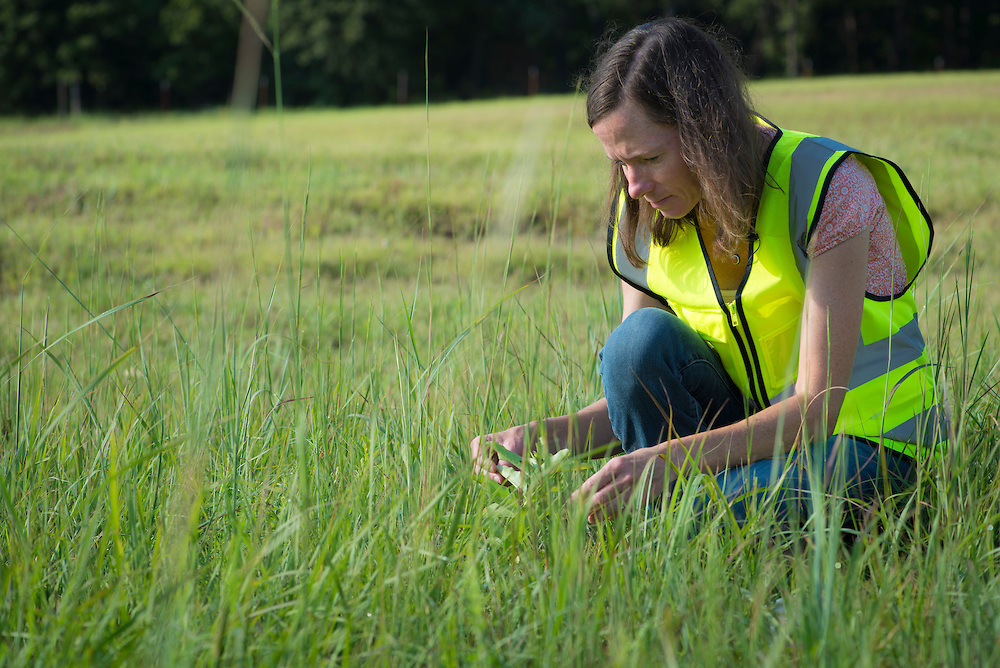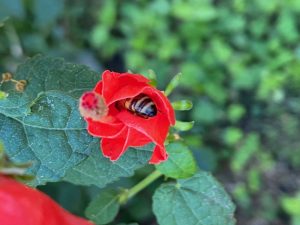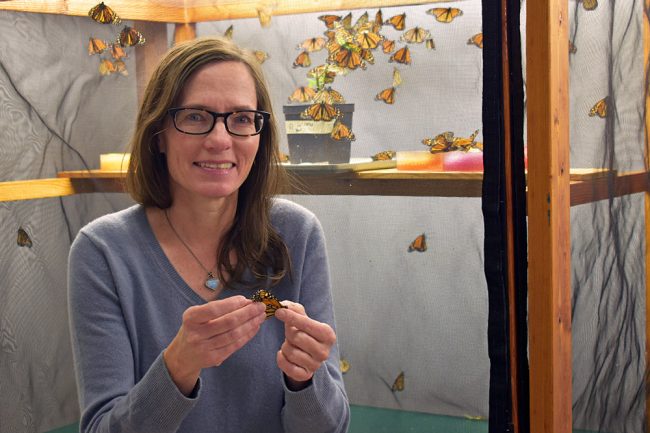Kristen Baum’s first semester at the University of Kansas at Lawrence sits in stark contrast to the previous 18 Novembers she spent at Oklahoma State University in Stillwater. With five inches of snow on the ground, the change of scenery and colder weather agrees with the 51-year-old biologist.
“It’s nice to see more leaves and colors because I kind of missed that in Oklahoma,” she shared in a recent phone interview. Her four dogs and two cats are adjusting to their new digs in the Midwest. The smaller pups are not thrilled with the snow, she said.
Baum grew up in Virginia and camped and hiked a lot as a child. “I had never stayed in a hotel until I was a junior in high school,” she said with a hearty laugh.
After graduating from The College of William and Mary in Williamsburg, Virginia with an environmental sciences degree, she worked as a research tech in habitat fragmentation with a focus on butterflies and lizards with ecologist Nick Haddad who is now a professor at Michigan State University. The collaboration with Haddad, author of The Last Butterflies: A Scientist’s Quest to Save a Rare and Vanishing Creature, introduced her to the charms of lepidoptera and led to her first peer reviewed publication with him on the impacts of habitat corridors on butterflies in 1999.

Monarch Watch director Kristen Baum gathers milkweed samples in her previous role at the Oklahoma State University-Stillwater. Photo courtesy Oklahoma State University
She then attended Texas A&M University where she worked closely with staff ornithologist and professor Keith Arnold researching black chinned and buff-bellied hummingbirds. There she learned of the wonders of Turk’s Cap, a compelling pollinator plant that grows in shade. “Turk’s cap produces TONS of nectar,” she said, obvious affection in her voice.
Baum switched to entomology in pursuit of her PhD and was studying Africanized honeybees when she first met Chip Taylor, the founder of Monarch Watch. Interestingly, Taylor spent years studying Africanized bees before moving on to monarchs in 1992.
Baum landed at Oklahoma State University in 2005, where she served as a professor of integrative biology and eventually, associate dean for research.
Until recently.
In September, she arrived in the heart of the monarchs’ summer breeding grounds and in October assumed the mantle at Monarch Watch, the premiere citizen science and conservation organization best known for its signature monarch butterfly tagging program.

Honeybee on Turk’s cap. Baum is a fan of this shade loving plant. Photo by Monika Maeckle
Founded in 1992 by Orley “Chip” Taylor, Monarch Watch is morphing to the next stage, and Baum will lead the charge.
Taylor, considered the padrino of the monarch butterfly conservation movement by many, remains completely supportive at age 86. As director emeritus, he will continue to contribute and study the iconic insects. As he stated in a recent webinar, Baum is “a gem” and “a perfect fit” for Monarch Watch.
Filling the legacy shoes of an organization’s founder can often be daunting, but Baum is up to the task.
“Monarch Watch really runs itself,” she said, explaining her plan to build on past success. “No words can express how critical Jim, Ann and Dena are,” she added, referring to longtime staff members–Jim Lovett, Ann Ryan and Dena Podrebarac. “All the pieces are there–the tagging, rearing kits, milkweed, the conservation specialists…I don’t see any of that changing.”
Baum will set up a new research laboratory devoted to monarch butterflies and pollinator conservation. Unlike Taylor, who retired from full time teaching years ago, Baum will have the opportunity to mentor undergraduate and graduate students on monarch research projects.

Monarch Watch founder Chip “Orley”Taylor. –Courtesy photo
Baum’s position was partially underwritten by the Monarch Watch Chip and Toni Taylor Professorship, a fulltime faculty position at the University of Kansas under the umbrella of the Kansas Biological Survey & Center for Ecological Research and the Department of Ecology and Evolutionary Biology dedicated to overseeing the science of Monarch Watch.
Last September, Taylor and his wife announced at Monarch Watch’s 30th anniversary celebration that the couple would commit $1.4 million in Apple Computer stock to the KU Endowment, the private foundation authorized to raise funds for the University of Kansas.
“This ensures the future of Monarch Watch. It deserves to continue,” Taylor said at the time.
Baum is poised to make that happen. She confesses ongoing curiosity about the many unanswered questions raised by the monarch migration and the answers tagging data can provide.
“While nothing needs to be changed, as we have conversations, we’ll be coming up with new ideas,” said Baum. “We’re always looking for new opportunities and how we can broaden our reach.”
TOP PHOTO: Kristen Baum, director of Monarch Watch. Photo courtesy University of Kansas at Lawrence
Related posts:
- USDA revises plant hardiness zones, seed packets will never be the same
- Diminished monarch migration moves slowly through Texas into Mexico
- IUCN revises listing of monarch from “endangered” to “vulnerable”
- Monarch migration underway as new studies suggest butterflies are “not in danger”
- Q & A : Migration studies expert Andy Davis says, for monarchs, it’s survival of the biggest
- Recent IUCN “endangered” listing creates confusion for monarch butterfly followers
- Eastern monarch population up 35% this year, but still much work to do
- Dejavu: is 2022’s dry spring setting the stage for another Texas drought like 2011?
- They’re here! Drought conditions greet monarch butterflies as they arrive in Texas
Like what you’re reading? Don’t miss a single post from the Texas Butterfly Ranch. Sign up for email delivery, like us on Facebook, or follow us on Twitter, @monikam or Instagram.


Congratulations!
Welcome aboard
With a MSU background, she has to be good.
With a MSU background she has to be good.
What a wonderful surprise! I wanderd the halls of OSU Zoology LSW this week and could not find Kristen’s Office!
NOW I Know Why! Congratul;ations.